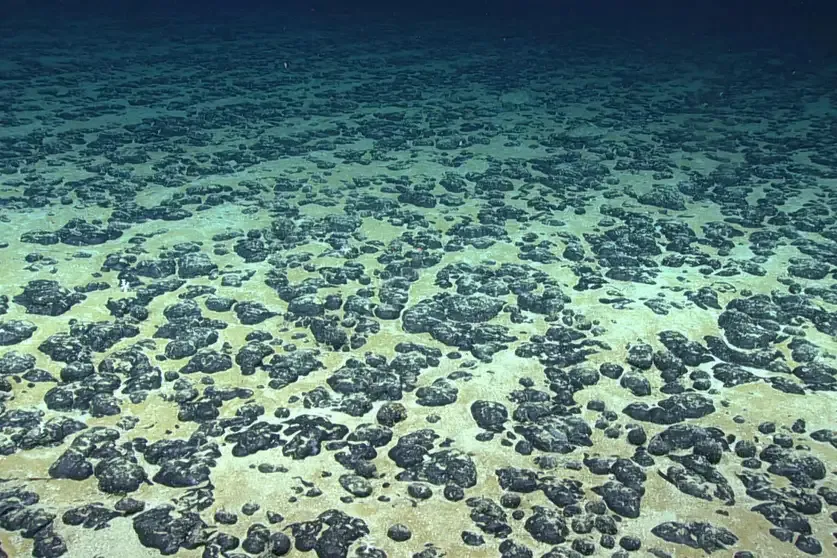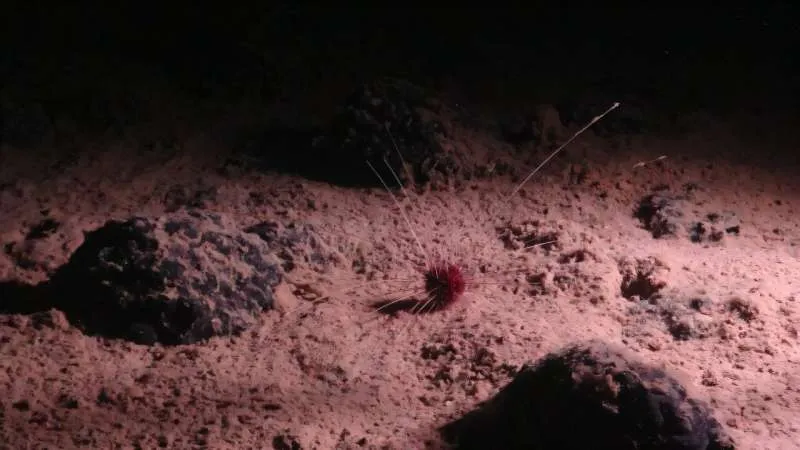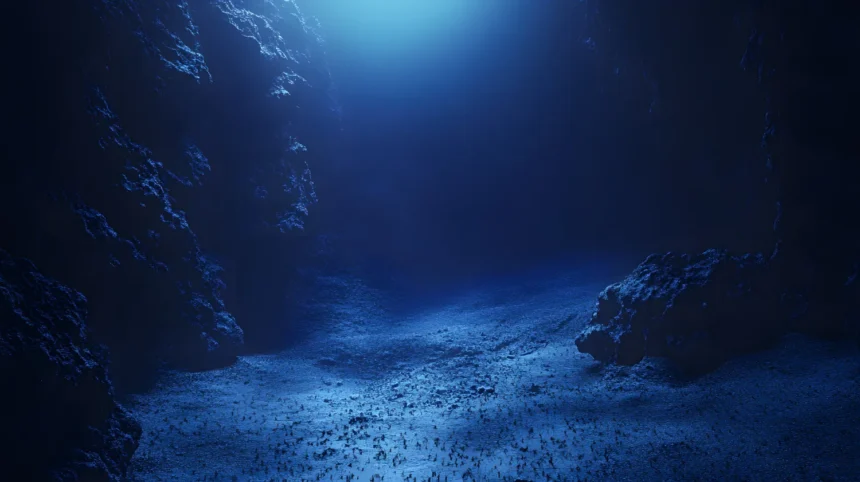Introduction: Unveiling a Deep-Sea Mystery
The ocean’s depths have long concealed secrets beyond our imagination. Recent discoveries have unveiled a phenomenon that challenges our understanding of marine science: the production of “dark oxygen” in the abyssal zones, more than 10,000 feet below the surface. This revelation prompts us to reconsider the established mechanisms of oxygen generation in the deep sea.
Read also: Ocean Relief: 7 Spectacular Features That Shape Our Oceans
What Is Dark Oxygen? The Hidden Source of Life
Traditionally, we have understood that oxygen in the ocean is primarily produced through photosynthesis by surface-dwelling organisms like phytoplankton. This oxygen then diffuses into deeper waters, supporting marine life far below. However, the discovery of “dark oxygen”—oxygen generated in the absence of sunlight—suggests an alternative production pathway. This process occurs in the deep sea, where sunlight cannot penetrate, indicating that oxygen can be produced through non-photosynthetic means.
Read also: Ocean Deposits: Fundamentals of 4 Types and Their Distribution
How Scientists Discovered Dark Oxygen in the Ocean
The discovery of dark oxygen was made during benthic chamber experiments in the Clarion-Clipperton Zone (CCZ), a vast deep-sea region in the Pacific Ocean known for its rich deposits of polymetallic nodules. These nodules, composed primarily of manganese, nickel, copper, and cobalt, were initially studied for their mineral composition, but they unexpectedly revealed a new oxygen production mechanism.
During the experiment, researchers placed benthic chambers—sealed enclosures—over sections of the seafloor to measure oxygen changes over time. Over 48 hours, scientists observed a significant rise in oxygen levels, with concentrations tripling compared to the surrounding deep-sea environment. This increase puzzled researchers, as the seafloor at depths of 10,000 feet and beyond receives no sunlight, ruling out traditional photosynthesis as the source.
Further investigation linked this phenomenon to the presence of polymetallic nodules. Scientists hypothesized that these mineral-rich nodules might be acting as natural catalysts, driving a chemical reaction similar to seawater electrolysis. This process splits water molecules into oxygen and hydrogen, producing what is now termed dark oxygen. The findings challenge long-standing beliefs about deep-sea oxygen production and open new questions about unexplored biochemical pathways in the abyssal ocean.
Read also: 10 Amazing Facts about the Earth’s Oceans
The Science Behind Dark Oxygen: A New Perspective on Marine Life
The phenomenon of dark oxygen production is believed to be driven by a process similar to seawater electrolysis, facilitated by polymetallic nodules on the deep-ocean floor. These nodules, rich in manganese, nickel, copper, and cobalt, are known to conduct electrical charges and act as natural geobatteries. When exposed to weak electric currents present in the deep-sea environment, these minerals may trigger chemical reactions that split water molecules (H₂O) into oxygen (O₂) and hydrogen (H₂)—all without the presence of sunlight.
This mechanism contradicts the traditional belief that all oceanic oxygen is either produced by photosynthesis in surface waters or transported downward via oceanic currents. Instead, it introduces the possibility that certain deep-sea regions have an indigenous oxygen source, allowing marine organisms to thrive in previously thought oxygen-limited environments. This revelation raises critical questions about deep-sea biodiversity and biogeochemical cycles.

If confirmed on a larger scale, this process could reshape our understanding of how life sustains itself in the deep ocean, where extreme pressure, low temperatures, and limited nutrients make survival challenging. Moreover, the discovery of an alternative oxygen source opens doors to further exploration of similar chemical processes in extraterrestrial environments, such as subsurface oceans on moons like Europa and Enceladus.
Understanding dark oxygen could redefine marine oxygen cycles, influence climate science, and even shape policies on deep-sea mining, as disrupting polymetallic nodules might have unforeseen ecological consequences.
Read also: Mysteries of the Deep: Recent Discoveries from Ocean Expeditions
Why This Discovery Matters: The Global Impact of Dark Oxygen
The implications of dark oxygen production go beyond marine biology, influencing climate science, resource management, and even planetary exploration. Here are some additional key impacts:
1. Evolution of Deep-Sea Life
- Dark oxygen may have shaped evolutionary adaptations in deep-sea organisms, allowing them to survive in oxygen-poor environments.
- It could explain the presence of previously unexplained deep-sea biodiversity in low-oxygen zones.
2. Expansion of Habitability in Extreme Environments
- If dark oxygen exists in multiple deep-sea locations, it could redefine the habitable zones of the ocean.
- The discovery raises questions about oxygen availability in other extreme environments, such as deep-sea trenches and hydrothermal vents.
3. Rethinking Oceanic Oxygen Budgets
- Traditional oceanic models assume oxygen is only produced at the surface and transported downward.
- This oxygen may require scientists to adjust global oxygen budgets, affecting predictions about ocean deoxygenation due to climate change.
4. Potential for Alternative Energy Sources
- If polymetallic nodules facilitate natural electrolysis, this knowledge could inspire new energy-generation technologies.
- Studying these reactions may improve hydrogen fuel production methods for clean energy.
5. Space Exploration & Astrobiology
- The discovery suggests that similar oxygen-producing mechanisms could exist on icy moons like Europa and Enceladus, where liquid water is trapped under thick ice.
- It strengthens the case for microbial life in extraterrestrial oceans, expanding possibilities for astrobiological research.
6. Conservation & Ocean Policy Implications
- Understanding the role of polymetallic nodules in oxygen production could lead to stricter regulations on deep-sea mining.
- It highlights the need for sustainable ocean resource management to prevent unintended ecological consequences.
Read also: Ocean Acidification: Unveiling the Hidden Crisis Threatening Marine Life
What’s Next? Future Research and Unanswered Questions
While the discovery of dark oxygen is groundbreaking, it raises a multitude of questions that require further scientific investigation. Here are additional key areas for future research:
1. Chemical Mechanisms & Catalysts
- What specific reactions drive dark oxygen production at the molecular level?
- Do other minerals besides polymetallic nodules contribute to this process?
- Can we replicate and harness this reaction for industrial applications, such as hydrogen fuel production?
2. Variability & Environmental Conditions
- How do temperature, pressure, and salinity affect dark oxygen production?
- Could deep-sea earthquakes or hydrothermal activity enhance or inhibit the process?
- Are there seasonal or geochemical variations that influence oxygen release?

3. Global Occurrence & Widespread Impact
- Is dark oxygen production limited to the Clarion-Clipperton Zone, or does it occur in other deep-sea locations?
- Could this process be happening undetected in the Atlantic, Indian, and Southern Oceans?
- How does this oxygen contribute to global marine oxygen budgets?
Read also: Water Beyond Earth: How the Universe Created Water Before Our Planet Existed
4. Impact on Deep-Sea Microbiology & Evolution
- Are there microbial communities that directly utilize dark oxygen?
- Could this oxygen source support unknown deep-sea life forms in extreme environments?
- Has dark oxygen played a role in deep-sea evolution over millions of years?
5. Potential Role in Earth’s Past & Future Climate
- Could dark oxygen have influenced past mass extinctions or oceanic anoxic events?
- Does it contribute to modern-day climate regulation in ways we don’t yet understand?
- How might human activities, like deep-sea mining, alter this hidden oxygen cycle?
6. Applications Beyond Earth: Astrobiology & Space Exploration
- Could dark oxygen production occur on other planets or moons with mineral-rich subsurface oceans?
- Is this a potential mechanism for sustaining extraterrestrial life in environments like Europa, Enceladus, or Titan?
- Should space missions prioritize searching for similar electrochemical processes in alien oceans?
7. Conservation & Policy Challenges
- How can policymakers regulate deep-sea mining while considering the role of dark oxygen in sustaining marine life?
- Should there be international agreements to protect polymetallic nodule regions?
- What measures should be taken to balance scientific exploration with ecological preservation?
Read also: How Ocean Currents Affect Climate: Unveiling the Ocean’s Powerful Weapon in 5 Ways
Key Takeaways
- Dark oxygen refers to oxygen produced in the deep ocean without sunlight, challenging traditional photosynthetic paradigms.
- This phenomenon is associated with polymetallic nodules acting as natural geobatteries, facilitating seawater electrolysis.
- The discovery has significant ecological, climatic, and industrial implications, particularly concerning deep-sea mining activities.
Conclusion
The discovery of dark oxygen below 10,000 feet challenges our understanding of deep-sea ecosystems. For years, scientists believed oceanic oxygen was solely produced through photosynthesis or transported from surface waters. However, the revelation that polymetallic nodules may generate oxygen without sunlight reshapes marine science.
This finding has far-reaching implications—from sustaining deep-sea life to influencing climate models and raising concerns about deep-sea mining. If these nodules play a critical role in oxygen production, their disruption could have unintended ecological consequences.
As research continues, scientists must explore how widespread this process is, its impact on global oxygen cycles, and whether similar mechanisms exist in other extreme environments—perhaps even on other planets. Understanding dark oxygen could open a new chapter in oceanography and planetary science.
FAQs
1. What is dark oxygen?
Dark oxygen is oxygen produced in the deep ocean through non-photosynthetic processes, occurring without sunlight.
2. How was dark oxygen discovered?
Researchers observed unexpected oxygen increases during benthic chamber experiments in the Pacific Ocean’s Clarion-Clipperton Zone.
3. What causes dark oxygen production?
It’s hypothesized that polymetallic nodules on the seafloor facilitate seawater electrolysis, splitting water molecules into oxygen and hydrogen.
4. Why is dark oxygen significant?
This discovery challenges existing understanding of oceanic oxygen sources and has implications for deep-sea ecology and climate models.
5. Could dark oxygen impact deep-sea mining?
Yes, disrupting polymetallic nodules through mining could affect dark oxygen production and, consequently, deep-sea ecosystems.
References
- Nature Geoscience: Evidence of dark oxygen production at the abyssal seafloor
- Northwestern Now: Deep-ocean floor produces its own ‘dark oxygen’
- Oceanographic Magazine: Deep Sea’s ‘Dark Oxygen’ is “most profound discovery of our time”
- Smithsonian Magazine: Scientists Discover ‘Dark Oxygen’ on the Ocean Floor Generated—Surprisingly—by Lumps of Metal
- CNN: Scientists discover ‘dark’ oxygen being produced more than 13,000 feet below the ocean surface
- Phys.org: ‘Dark oxygen’: a deep-sea discovery that has split scientists
- Science: Claim of ‘dark oxygen’ on sea floor faces doubts





